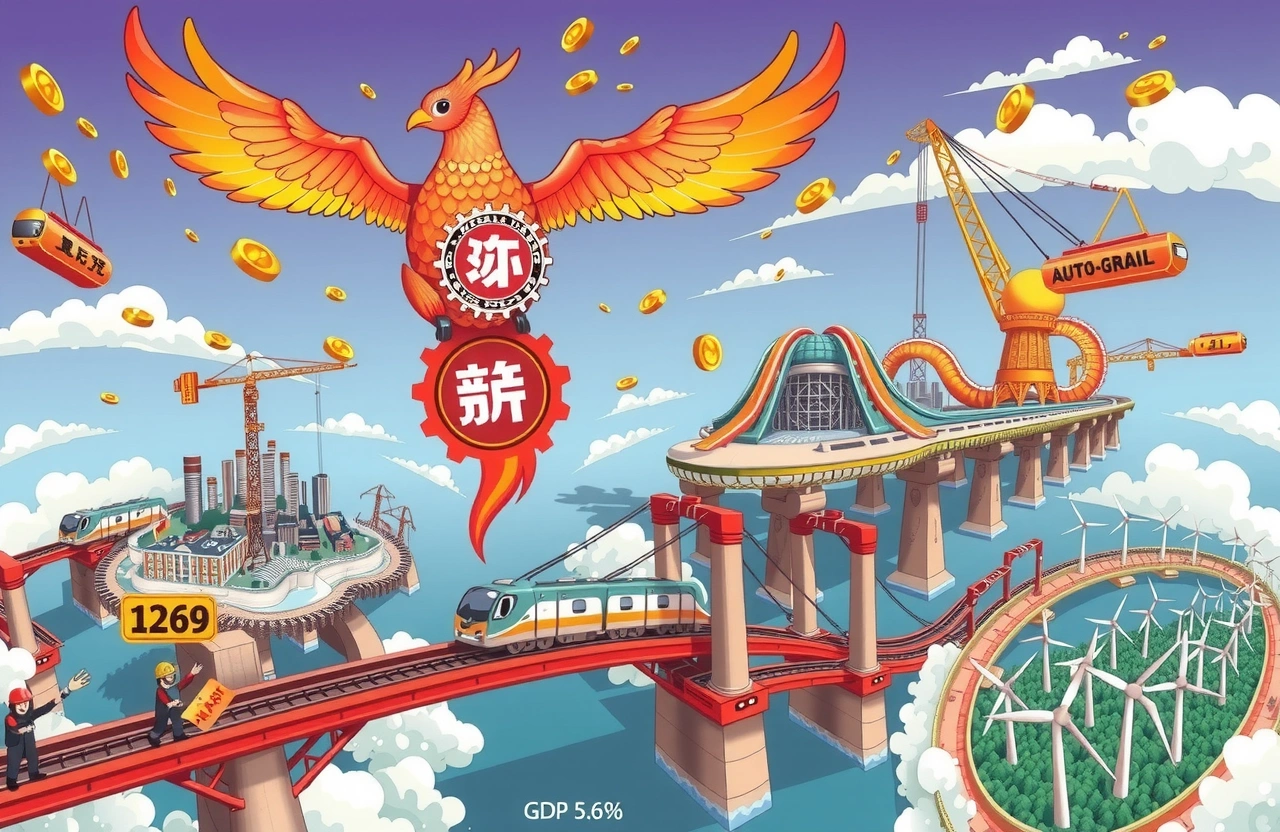Rediscovering Relevance: Jiangxi’s Economic Rebound
Jiangxi’s remarkable GDP growth of 5.6% in the first half of 2025 has stunned economists, outperforming the national average by 0.3 percentage points. This resurgence marks a dramatic reversal for a province that ranked among China’s three slowest-growing economies just two years ago. The turnaround signals an ambitious transformation beyond temporary recovery—a fundamental restructuring of Jiangxi’s economic foundations that leverages its historical advantages while embracing modern industrial strategy.
The Engine of Revival: Industrial Resurgence
Non-Ferrous Metals Windfall
Global price surges for industrial metals ignited Jiangxi’s recovery. This resource-rich province contributes 10% of China’s non-ferrous metal output, with its copper smelting prices rising 3.9% year-on-year. The provincial capital Nanchang saw automotive manufacturing skyrocket 18.7% while electronic equipment surged 15.4%. With industrial growthhotspots including:
– World Copper Capital: Yingtan‘s strategic reserves
– Rare Earth Hub: Ganzhou’s ‘China Rare Earth Valley’ cluster
– Tech Manufacturing Centers: Nanchang and Jiujiang electronics corridors
The “1269” Industrial Revolution
Jiangxi’s industrial strategy centers on the innovative chain-based governance model:
– Chain Directors System: Provincial leadership personally oversees 12 key industries
– Chain Owners Initiative: Industry champions coordinate with supply chain partners
– Precision Targeting: Industrial parks receive customized policy support
The results speak clearly: 6 of Jiangxi’s 11 cities reported double-digit industrial growth rates in early 2025 with high-tech manufacturing expanding 13.7%.
Transport Transformation: Reclaiming Historic Position
High-Speed Rail Revolution
Jiangxi achieved national leadership by becoming China’s first province with all cities connected by 350km/h rail by December 2023. This erased its notorious “encircled” status within China’s rail network and catalyzed regional economic integration.
Canal Renaissance
China’s Ministry of Transport recently prioritized two canal projects that position Jiangxi at the heart of national logistics:
1. Gan-Yue Canal: Linking Yangtze and Pearl River systems
2. Zhe-Gan Canal: Connecting Jiangxi with Zhejiang
These could recreate Jiangxi’s historical role as China’s continental trade hub—a centerpiece of its economic transformation.
Future Industries Strategy
Jiangxi’s forward-looking industrial blueprint targets six growth frontiers:
– Future Materials: Ganzhou rare earth development
– Green Energy: Yichun lithium battery production
– Aviation Innovation: Nanchang’s aerospace manufacturing hub
Anhui Model: Regional Cooperation Blueprint
The neighboring Anhui province demonstrates invaluable strategies for Jiangxi’s continued transformation:
– Chain Leader: Anhui joined nationwide alliances including national HSR networks
– Bridge Builder: Simultaneously integrated with Yangtze Delta economic engines
The lesson? Provincial boundaries shouldn’t limit economic vision.
Sustaining the Transformation Momentum
For Jiangxi’s economic revival to mature into lasting transformation, strategic integration remains crucial. The province must:
– Leverage border cities as integration gateways
– Formalize partnerships with Guangdong and Zhejiang
– Institutionalize success mechanisms
The infrastructure foundations now accelerate this transformation journey—Jiangxi’s economic renaissance appears unstoppable.
The Path Forward
With industrial revitalization strategies yielding results and transformative infrastructure nearing completion, Jiangxi demonstrates how historical regions rebrand economies. By deliberately positioning itself within national logistics networks while cultivating advanced industries, Jiangxi transforms geographic centrality into economic advantage. As China boosts internal circulation, Jiangxi’s infrastructure investments may vault it into unforeseen strategic prominence.




